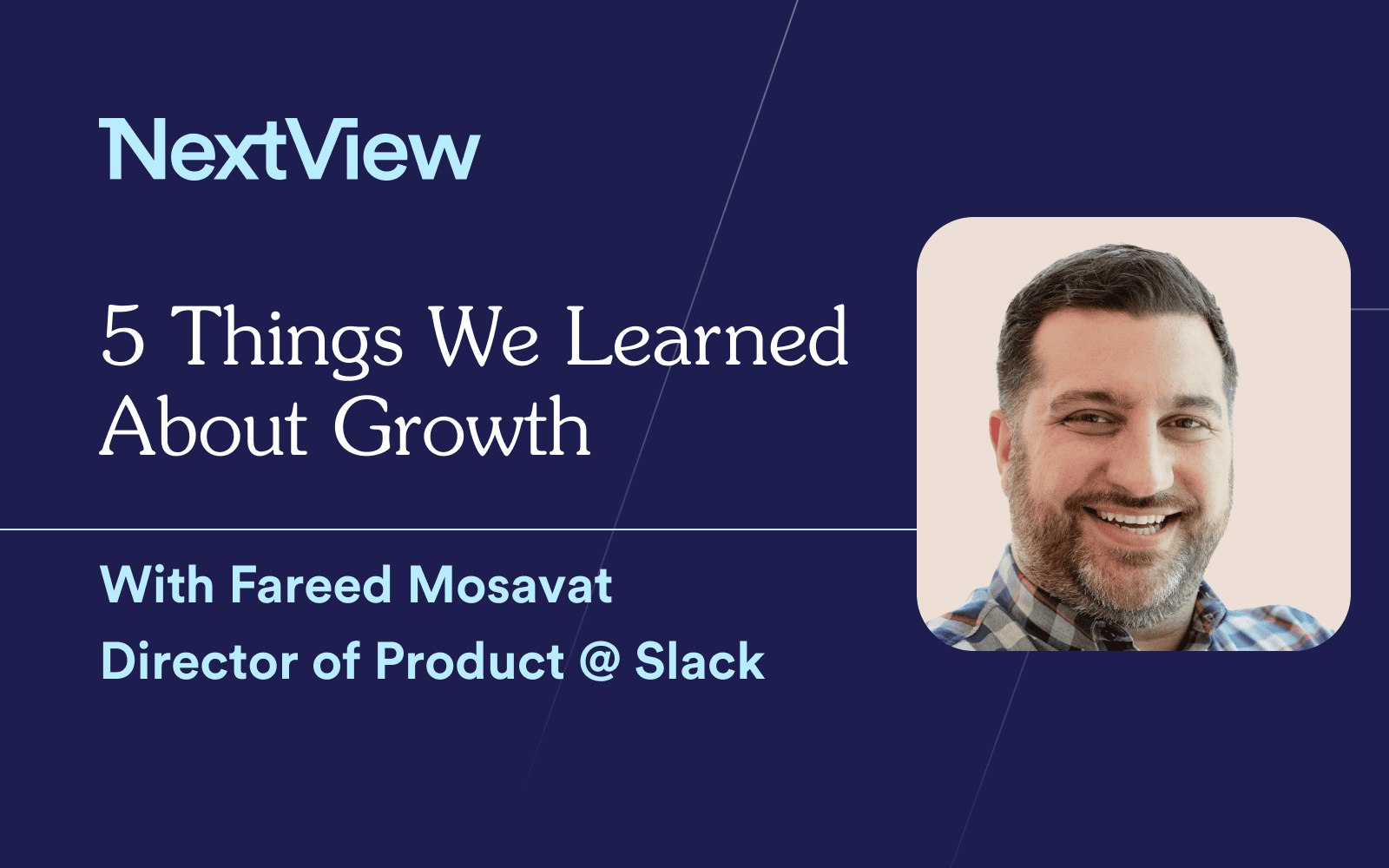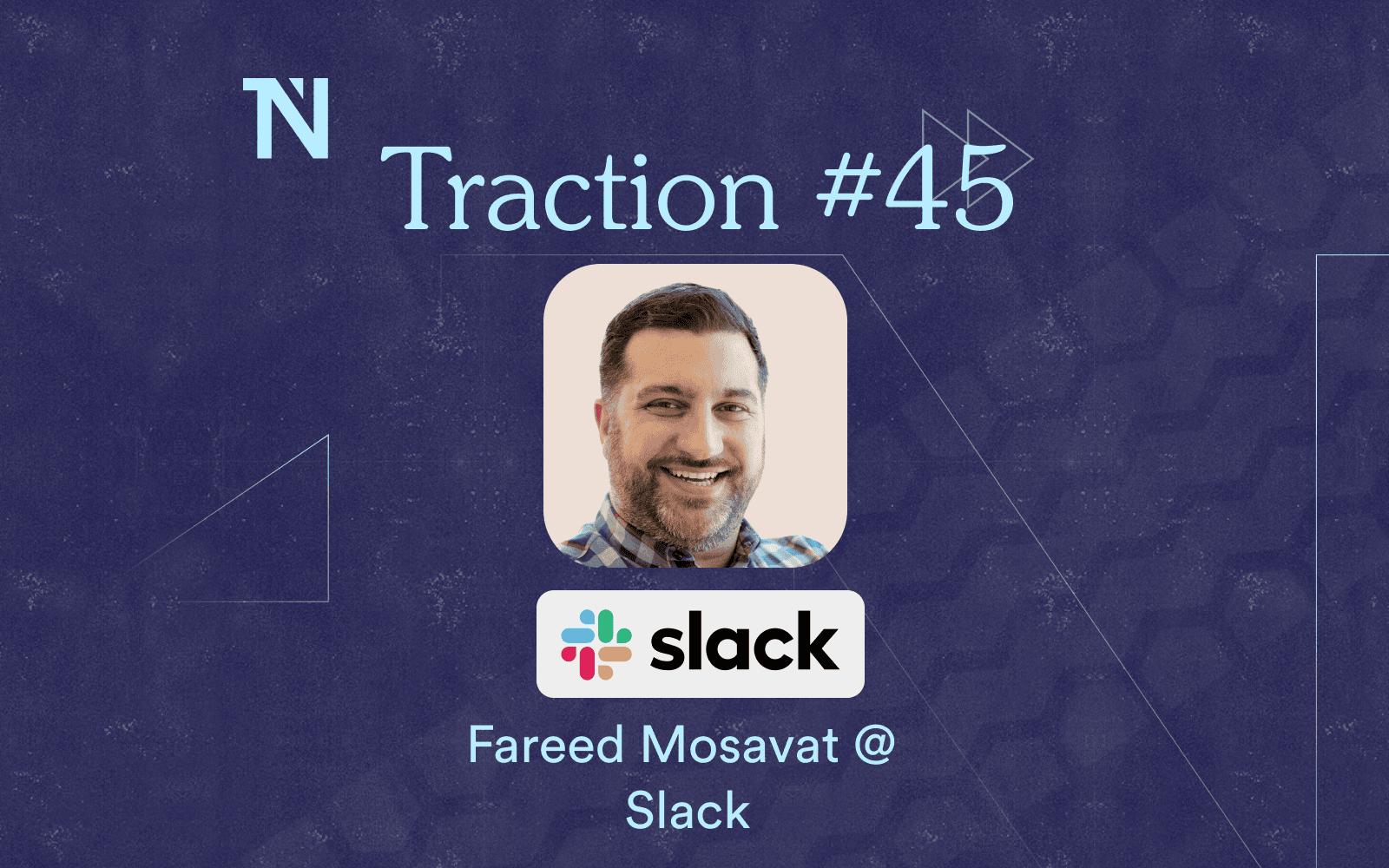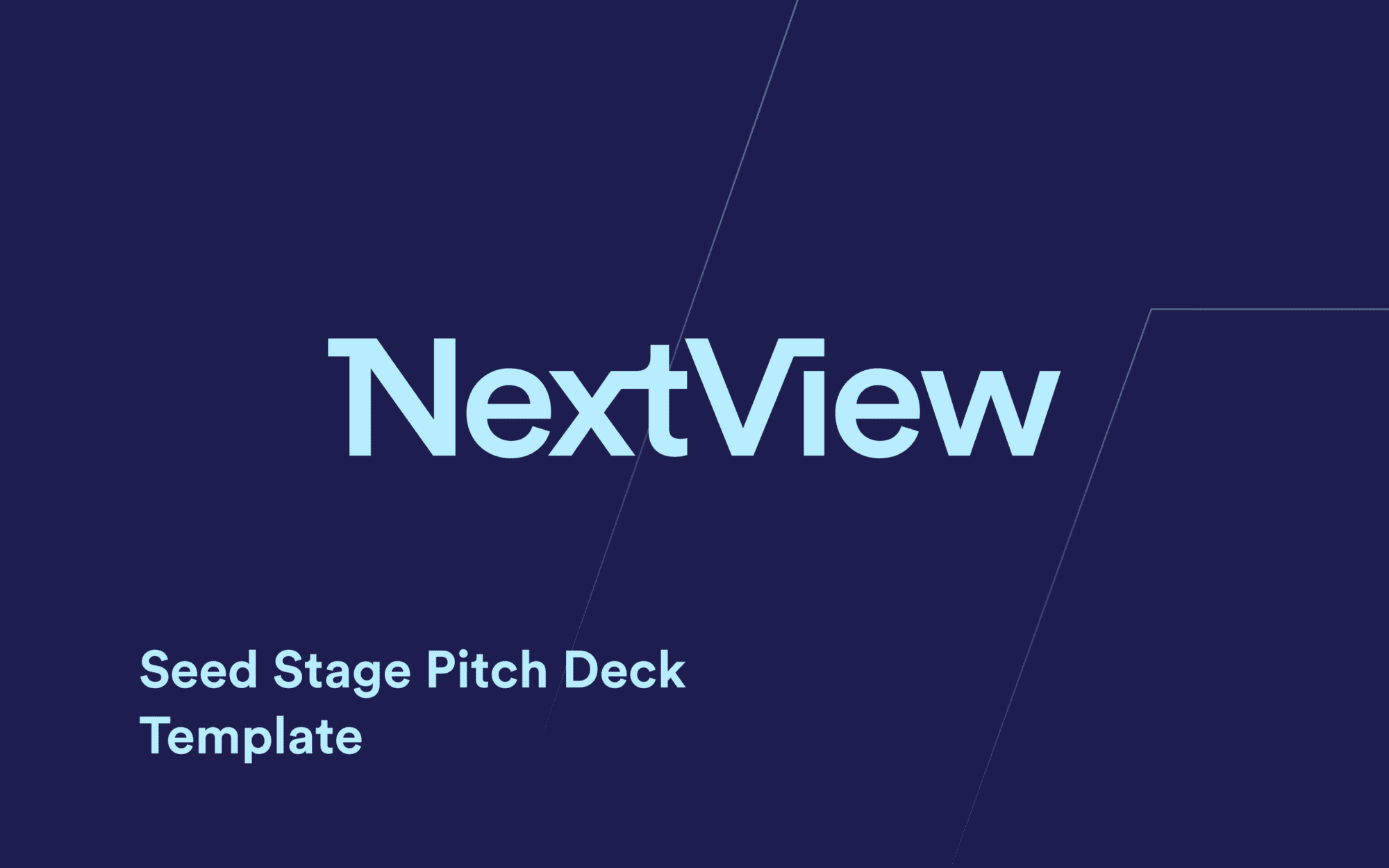


5 Insights On Product Growth We Learned From Fareed Mosavat at Slack
Recently, we got a group of Product Managers from our portfolio together to chat with Fareed Mosavat about all things growth. Fareed is the Director of Product at Slack where he is working on the adoption and growth for their largest customers. He’s worked on a variety of different growth projects at Slack in the past 2 and half years, from first time user experience, to working on the modernization of the platform.
He has an incredible resume, prior to working at Slack, he worked on growth at a handful of different startups. He started his career at Pixar Animation Studios where he was a technical director and worked on feature film animation. He decided that moving fast was more his speed, so he joined Conduit Labs in Boston in 2007, who was purchased by Zynga 3 years later. After Zynga, he joined the Run Keeper team for a few years before ultimately ending up where he is now, Slack.
While we learned a lot during the session, here are the 5 most important things we learned:
1. Customer Segmentation
When building an enterprise tool, you have to think about segmentation from both the end user and the decision maker’s POV. You want you end users to be happy with the product. Do they like it? Is using it easy for them? Then you have to have something for the decision makers, since they’re the ones with the purchasing power, and that actually changes dramatically depending on the size of the organization that you’re selling to, as well as that part of the organization you’re selling to.
At Slack we think about customer types differently. So, we could segment based on the industry or vertical or the company, right? And I think that makes sense in certain ways. But I think you’d be losing sight, because in my case, Slack wants to be a wall to wall product. We really do believe that we’re a product for every single person inside of every organization who sits at a desk, or is, what we colloquially call it, a knowledge worker.
There are obviously different kinds of segmentation for the end user, but also think about the buyer here. From a buyer perspective, often things like company size, industry vertical, compliance needs, etc. are as important as the person who’s actually using the product. So, we also have sort of another axis that we use, which is, who is the person actually using the product and what needs do we have for them.
At an enterprise level, knowing your buyer and knowing their needs and then contrasting it with knowing your end user and knowing their needs is an important part of building these bottom up businesses effectively.
2. Freemium Models
It’s really helpful to figure out how to understand willingness to pay. One thing you can do is launch the full paid product for free to a limited set of customers to get a real understanding of what users are doing, how they’re acting, what they do and do not care about, what features end up looking like power user features, and which features are essential to early success.
The first thing is you need to have the time to initial value be very, very, short because people treat free products like a pair of cheap sunglasses. It’s not something that they’re going to be super committed to. People tend to be committed more to if it’s going to take commitment to get to the first success. I think it makes sense to either do a trial model or something where you’re paying more upfront.
3. Onboarding
There’s always this tension between good friction and bad friction, because the way I like to think about this is, there’s some set of customers you know there’s product market fit for. They’re the ones who, guaranteed, no matter how many obstacles you put in front of them, they’re going to figure it out. You’ve made it hard, but they still figured out they still got value. Then there’s some population of people who look exactly like those power users (demographically in terms of their needs) who, because of the friction in your product, haven’t been able to figure it out.
Yes, sometimes good friction can be helpful because while you’ll lose the people who are super low intent, you’ll convert more of what I would call the “marginal user”. The people that look a lot like your base core audience but are not as high intent. So, I think it’s important to define your activation metric really precisely and really just take a bet that if you improve that it will result in more people discovering the other things down the line. Figure out early on what the difference between a successful customer and a non successful one is.
At the end of the day if you’ve built a good product that people really care about and they want to use, you’re going to have some core set of usage that is long term retained.
4. Building A Product Team
There’s a base set of competencies that every PM needs to have. Let’s call it a six or seven on a scale of 10. And ideally, they have one or two skills they’re a 10 or a 9 on, your usual T shaped skill set. But I do think that if you want to find somebody who’s good at everything, and talked to a bunch of folks trying to hire product managers, it’s like ‘oh everybody’s missing something’. Yeah that’s the reality of life, nobody’s 10 out of 10 on all dimensions.
And if you find someone who’s a 10 out of 10 on all dimensions please hire them immediately because it’s very, very, rare.
I think the question you have to ask yourself is what areas do you want to find generalists for? Especially as a Series A company, have six or seven highly skilled individuals in a bunch of different areas where you feel like you need the most specialized skillset. The way I like to think about this is I know I am not a very good designer, but that just means if I’m not an individual contributor PM. I need to be paired with a strong design partner, but someone who will trust me on the other aspects. I think that prioritization and ability to see the most important things is the most important skill to screen for. An ability to think holistically about how all the pieces fit together.
Someone who’s enough of a generalist to not be super narrow is the most important set of skills for a Series A or earlier stage startup because you don’t have the luxury of specialization. What’s important today will probably not be important tomorrow. So, if you hire to fill a particular like skill you may end up with someone who’s not equipped for the next problem you need to solve. That’s why I don’t look for 10 out of 10 on everything.
I like to think about like what is the one or two things that are culturally important or specifically valuable for this type of product. Look for that kind of experience and then try to build a team around that person does to shore up the other skills if that makes sense.
5. Analytical Debt
Implement data in your organization from the earliest days. Analytical debt is worse than product debt, and worse than technical debt. My experience now that I’ve been through this for a couple of years is that product data is culturally important. How do we use it? What’s logged? Is it clean? Is it consistent? Does it make sense to have a taxonomy? Do we have structures? Is it readable? Do we have real time tools those kinds of things?
These things become harder and harder to change over time because you’ve built more product. And so, when you get to the point where you’re like “you know what we need to fix this”, the amount of work is exponentially more difficult because your product complexity has increased so dramatically over time.
Subscribe to our email list to get posts delivered straight to your inbox.





